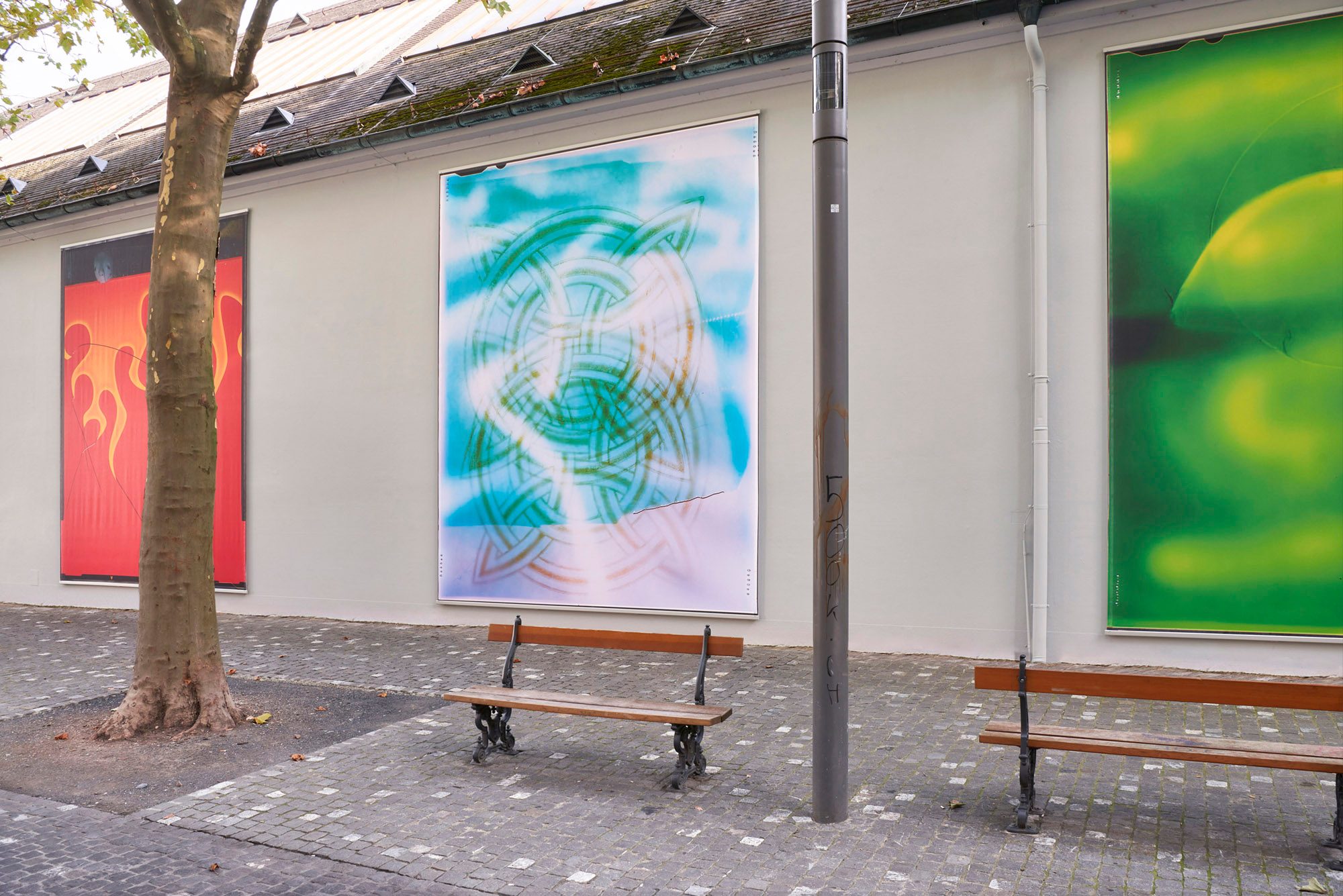A woman’s toothy grin plucked from the packaging of a drugstore flower bouquet, a silicone nipple bought on eBay, a fragment of a car’s flame decals, a plastic bag printed with traditional Georgian ornamentation found in Byzantine churches, a cocktail swizzle stick in the form of a palm tree. To extract these motifs from the five large-scale prints that grace Kunsthalle Basel’s back wall or even to describe the ways they are rendered—the blurriness, overexposures, overlaid images, scratches, and gossamer-like transparencies— hardly conveys the peculiar quality that makes you want to look again and again at Ketuta Alexi-Meskhishvili’s work. Here, experimental techniques and explosions of chroma manifest a kind of accumulated, painterly saturation that draws you in, all while the results teeter on a razor’s edge between the abstract and the figurative, a representation of a thing and the perfume of that thing.
The Georgian-born photographer knows well that photography used on monumental surfaces in public space typically serves commercial purposes—as an advertisement of some sort. Go there, covet this, consume that. Thus, Kunsthalle Basel’s outdoor, circa thirty-meterlong back wall presented a challenge that the artist took up with great interest. In response, she delved into her archive from the past few years and chose five images to be printed on the kind of PVC mesh typically used to shroud construction scaffolding. Each seems to toy with the notion of fast messaging, memes, and emojis (smile, nipple, flames, sun, palm tree) only to undermine the quick and reductive communication that these imply.
Specific photographic strategies make it possible for the artist to conjure a singular kind of diaphanous or otherworldly presence from the cheap, everyday objects we see in these images. Among her arsenal of techniques is the rayograph (employed in the pieces on view, with the exception of the image of the flames). Such “camera-less” images are made by placing objects directly on the surface of negative film emulsion in a darkroom and exposing them to light. Alexi-Meskhishvili has a predilection for using tiny lights that fit onto one’s fingertips— more commonly associated with nightclubs and raves—as her method of exposure. In working this way, she manages to explore that space of translation where an index of something is not an exact copy but contains accidents and allows for a new kind of image to develop. And when a camera comes into play (as it does for the image of the flames), she regularly uses a large format analog film camera—that slow and heavy converse to the fast and featherlight digital cameras that proliferate, small enough to fit into your pocket. Whatever her method, the black frame of the Kodak film sheet regularly appears on an image’s printed edges, and one might spot cuts or scratches from a knife blade that marred a negative before printing, or the traces of the clips that hold a negative in place. These, too, become part of her images, pushing back against the assiduous cropping and editing typically associated with the photographer’s crafting of a perfect image as well as the slick and seamless aesthetic that photography’s more commercial formats demand. Focusing on a constellation that conveys mystery, highlights the surface level of the image, and troubles perception, Alexi-Meskhishvili transmits something at once furtive but spectacular. Something that she describes as “outside of language and categorization, something other than information,” in other words: “the antithesis of clear messaging.”
More Information here.
Image credits: Ketuta Alexi-Meskhishvili, Verkleidung, Kunsthalle Basel, 2022-23, installation view. Photo: Philipp Hänger.








